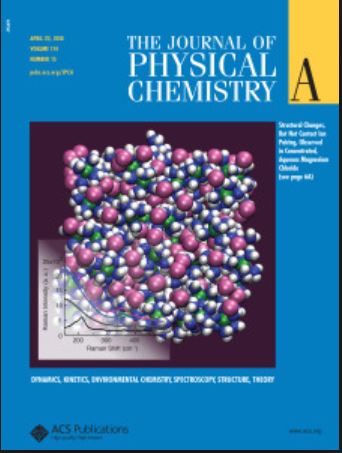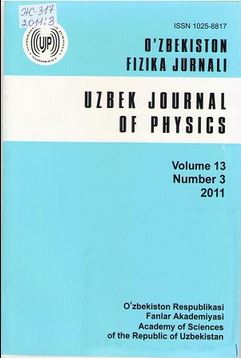Written by Iwanowski. Posted in Publications

I. Iwanowski, K. Leluk, M. Rudowski and U. Kaatze; Critical Dynamics of the Binary System Nitroethane/3-Methylpentane: Relaxation Rate and Scaling Function;
J. Phys. Chem. A 110 (2006) 4313-4319
Print
Written by Iwanowski. Posted in Publications

I. Iwanowski, S. Z. Mirzaev and U. Kaatze; Relaxation rate in the critical dynamics of the micellar i-C4E1/H2O system with lower consolute point;
Phys. Rev. E 73 (2006) 061508 (1-6)
Print
Written by Iwanowski. Posted in Publications

S. Z. Mirzaev, I. Iwanowski, M. Zaitdinov and U. Kaatze; Critical dynamics and kinetics of elementary reactions of 2,6-dimethylpyridine-water;
Chem. Phys. Lett. 431 (2006) 308-312
Print
Written by Iwanowski. Posted in Publications

U. Kaatze and I. Iwanowski; Critical dynamics of binary liquids. Recent evidence from dynamic light scattering and shear viscosity measurements as well as broadband ultrasonic spectrometry;
Uzb. J. Phys. 8 (2006) 223-238
Print
Written by Iwanowski. Posted in Projects

Nature comprises a multitude of critical phenomena. Spontaneous symmetry breaking at the origin of the universe and gravitation collapse are spectacular examples. Critical phenomena occur at phase transitions. Theories of phase transitions use methods of catastrophe theory and also of theory of percolation which currently attract considerable attention. In order to understand critical phenomena, investigations of liquid-liquid phase transitions in binary and ternary mixtures are very instructive. Especially the understanding of the phase behavior and the critical phenomena in ternary mixtures, biophysics and membrane physics have attracted attention during the last years . The essential and most amazing feature of critical phenomena was the discovery of critical point universality indicating that the microscopic structure of fluids becomes unimportant in the vicinity of the critical point. The understanding of such phenomena is also of great importance for chemistry and chemical engineering in procedures like liquid and solid extraction, drying, absorption, distillation and many other chemical reaction processes, as well as for biology in operations like fermentation, biological filtration and syntheses. Moreover, theories of critical phenomena are substantial for many innovative applications such as supercritical extraction, enhanced oil recovery and supercritical pollution oxidation. The importance of the understanding and application of critical phenomena is demonstrated by the recently (08.28.07) provided studies performed in the International Space Station (ISS).
Continue Reading
Print
Written by Iwanowski. Posted in Projects
The fascination about critical phenomena is based on the universality of the behaviour of systems, which can be quite different in many of their properties. Theoretical models of critical behavior are based on the terms renormalization and scaling. Such a new model shall be verified by comprehensive measurement of coupled parameters of critically segregating binary fluids. In addition, binary mixtures are to be investigated whose spectra reflect both universal and individual behaviour. Of particular interest is the coupling of critical dynamics to elementary chemical processes.
The similarity of different systems can be described by universal power laws which determine the thermodynamic and transport properties close to a critical point. In order to study the critical behavior in different systems it is convenient to use the so-called reduced temperature:

When the temperature T of a system is close to its critical temperature T , some relevant parameters F follow a power law:

with x > 0. At ε → 0, that is T → T , all terms except the 1 in the brackets disappear. Therefore, F satisfies the power law:

with ϕ, denoting the critical exponent for the particular variable F.
Continue Reading
Print







